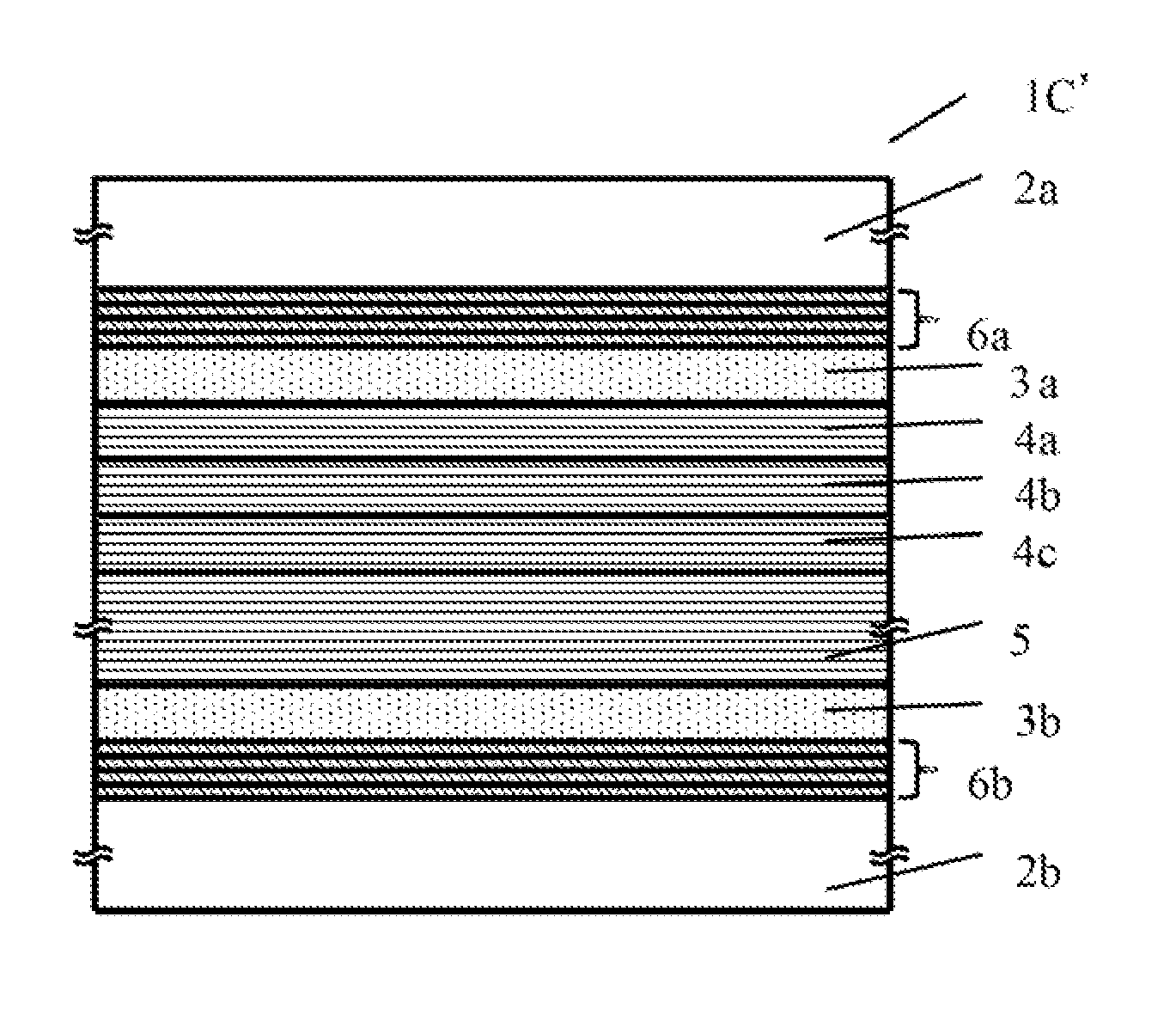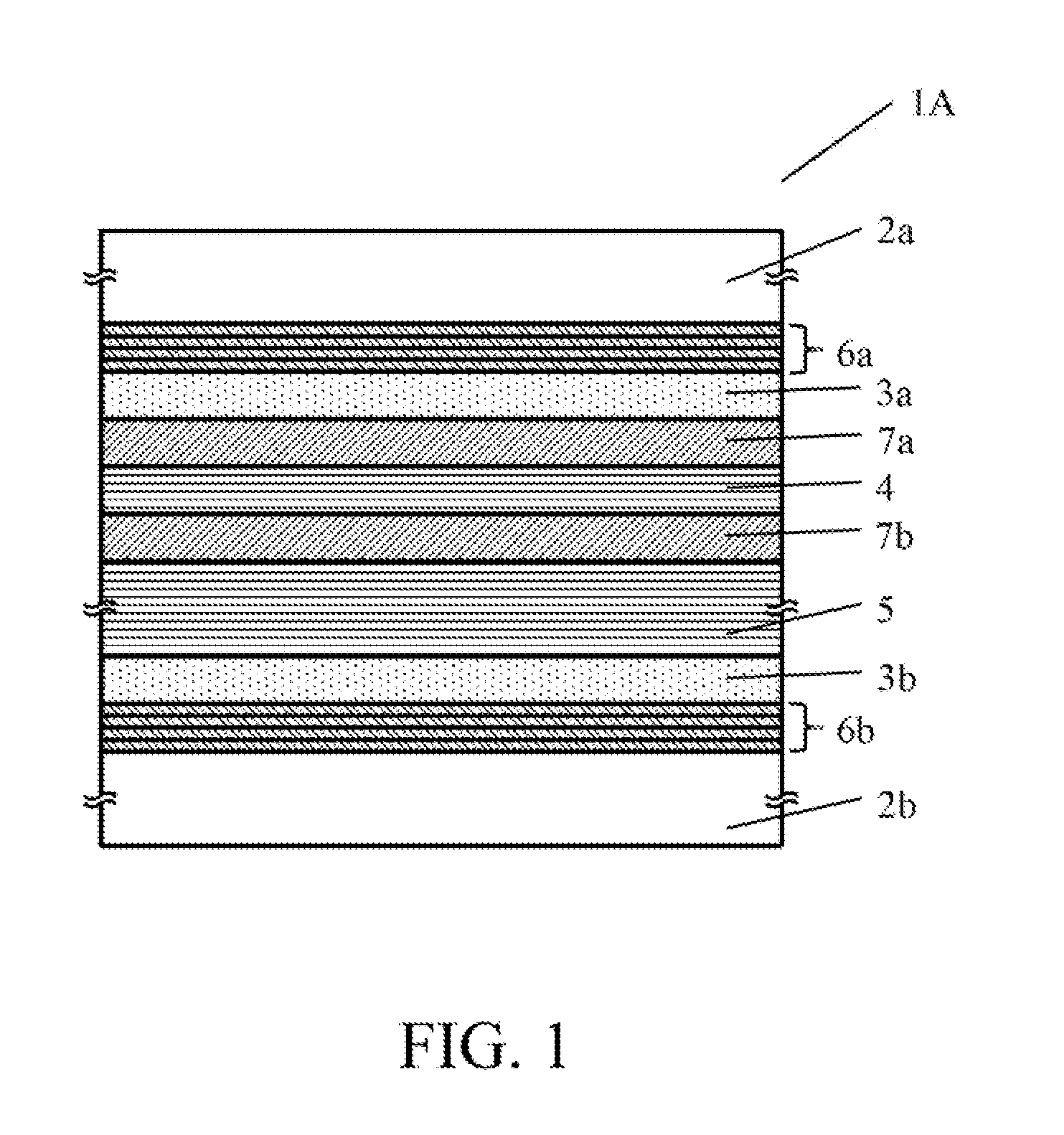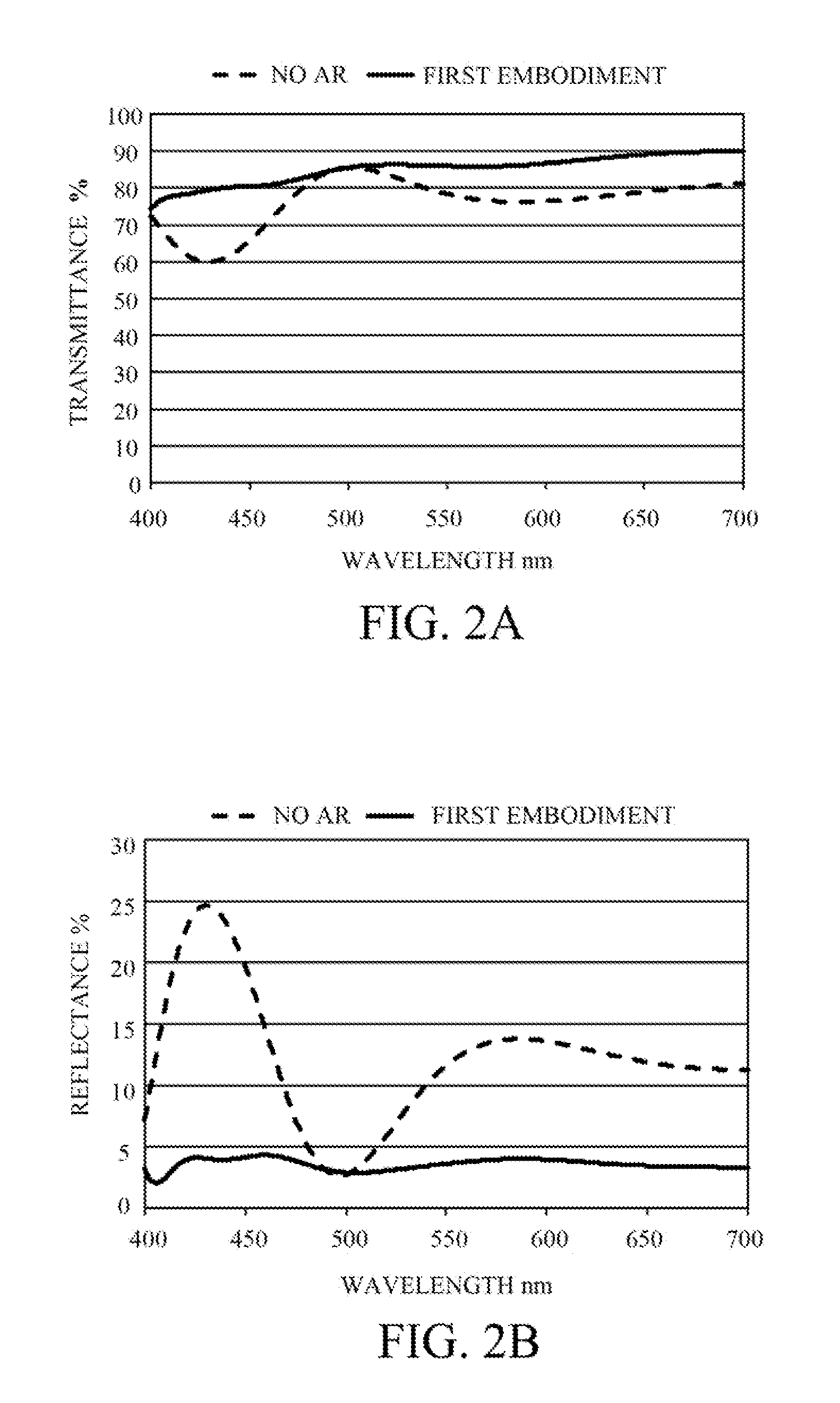Variable transmittance element, optical system, and optical apparatus utilizing electrochromic material
a transmittance element and optical system technology, applied in non-linear optics, instruments, optics, etc., can solve the problems of affecting the image performance of the pick-up optical system utilizing the variable transmittance element, and affecting the quality of the optical system. , to achieve the effect of reducing ghosts, improving color balance, and ensuring the quality of the optical system
- Summary
- Abstract
- Description
- Claims
- Application Information
AI Technical Summary
Benefits of technology
Problems solved by technology
Method used
Image
Examples
first embodiment
[0023]FIG. 1 is a sectional view of a variable transmittance element 1A according to a first embodiment. The variable transmittance element 1A includes substrates 2a and 2b, transparent electrode layers 3a and 3b, an electrochromic layer (EC layer) 4, an electrolyte layer 5, antireflective (“AR”) layers 6a, 6b, 7a, and 7b. In the variable transmittance element 1A, the substrate 2a, the AR layer 6a, the transparent electrode layer 3a, the AR layer 7a, the EC layer 4, the AR layer 7b, the electrolyte layer 5, the transparent electrode layer 3b, the AR layer 6b, and the substrate 2b are arranged in this order from the top.
[0024]The substrates 2a and 2b are flat plates or lenses. The two transparent electrode layers 3a and 3b are placed between these two substrates 2a and 2b, and made of ITO. The EC layer 4 has transmittance that is reversibly changed by electric control, is placed between the transparent electrode layers 3a and 3b, and is made of a high-density titanium oxide (TiO2). T...
second embodiment
[0053]FIG. 3 is a sectional view of a variable transmittance element 1B according to a second embodiment. The second embodiment is different from the first embodiment in that each of the transparent electrode layers 3a and 3b is as thin as 20 nm, there is no AR film 7a between the transparent electrode layer 3a and the EC layer 4 and the AR layer 7 of a single layer made of TiO2 is provided between the EC layer 4 and the electrolyte layer 5. Moreover, each of the AR layers 6a and 6b is a multilayer film in which four TiO2 layers and three SiO2 layers are alternately laminated in the second embodiment, and thus the number of layers of this embodiment is smaller than that of the first embodiment.
[0054]Table 3 shows a material, a refractive index n, an extinction coefficient k, and a film thickness of each layer in the second embodiment. The refractive index of each material means a refractive index for a wavelength of 550 nm.
TABLE 3FilmThick-ness dn(550 nm)k(550 nm)(nm)Substrate 2aGla...
third embodiment
[0060]FIG. 5 is a sectional view of a variable transmittance element 1C according to a third embodiment. The third embodiment uses an organic EC layer that is different from the EC layers in the first and second embodiment, and the variable transmittance element 1C includes none of the AR layers 7, 7a and 7b as single layers of the first and second embodiments. Each of the AR layers 6a and 6b of the third embodiment is a multilayer film in which four TiO2 layers and four SiO2 layers are alternately laminated.
[0061]Table 5 shows a material, a refractive index n, an extinction coefficient k, and a film thickness of each layer in the variable transmittance element 1C. The refractive index of each material means a refractive index for a wavelength of 550 nm.
TABLE 5FilmThick-ness dn(550 nm)k(550 nm)(nm)Substrate 2aGlass1.520AntireflectiveSiO21.480218layer 6aTiO22.29010SiO21.48042TiO22.29014TransparentITO1.920.023100electrodelayer 3aEC layer 4Organic1.590500EC layerElectrolyte1.48050000(N...
PUM
| Property | Measurement | Unit |
|---|---|---|
| refractive index | aaaaa | aaaaa |
| refractive index | aaaaa | aaaaa |
| refractive index | aaaaa | aaaaa |
Abstract
Description
Claims
Application Information
 Login to View More
Login to View More - R&D
- Intellectual Property
- Life Sciences
- Materials
- Tech Scout
- Unparalleled Data Quality
- Higher Quality Content
- 60% Fewer Hallucinations
Browse by: Latest US Patents, China's latest patents, Technical Efficacy Thesaurus, Application Domain, Technology Topic, Popular Technical Reports.
© 2025 PatSnap. All rights reserved.Legal|Privacy policy|Modern Slavery Act Transparency Statement|Sitemap|About US| Contact US: help@patsnap.com



